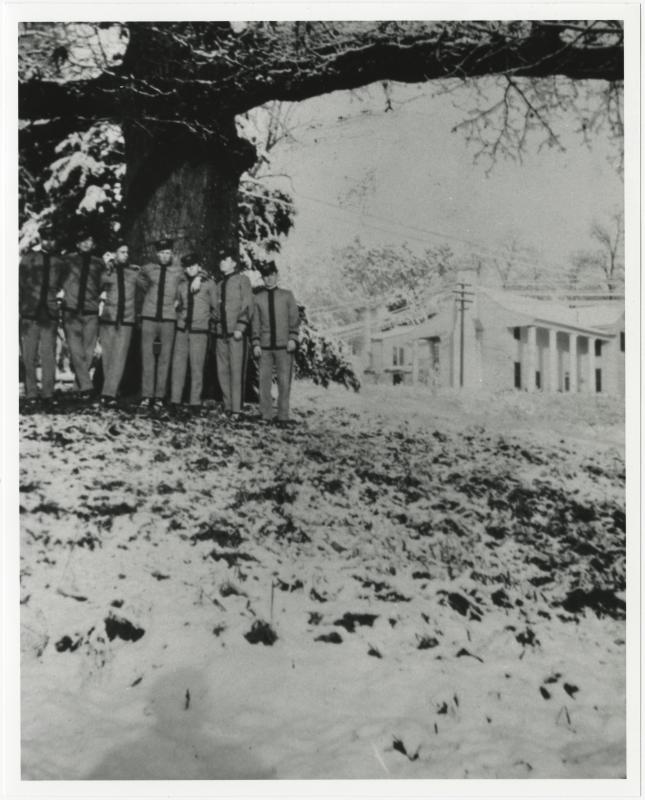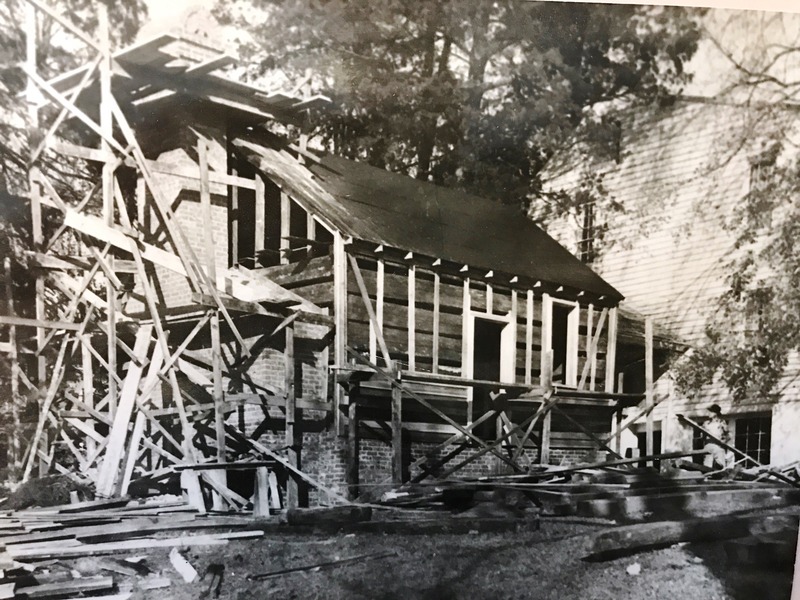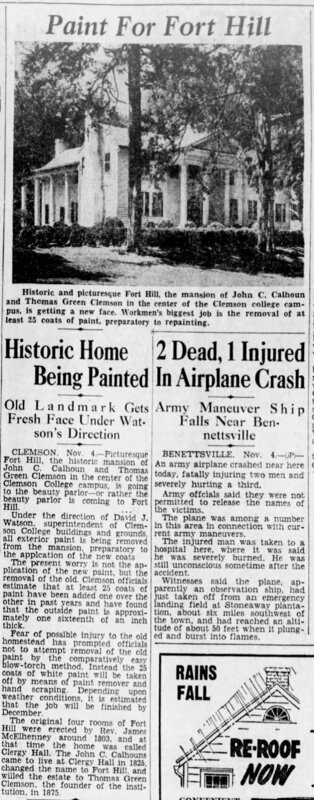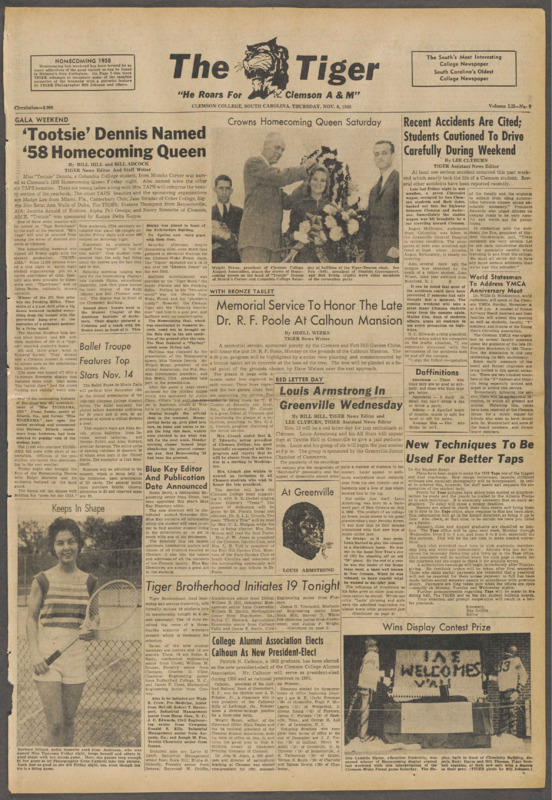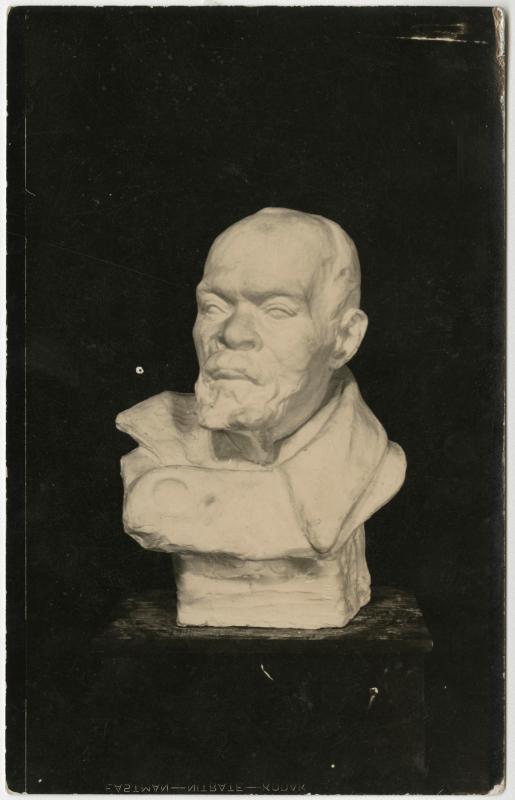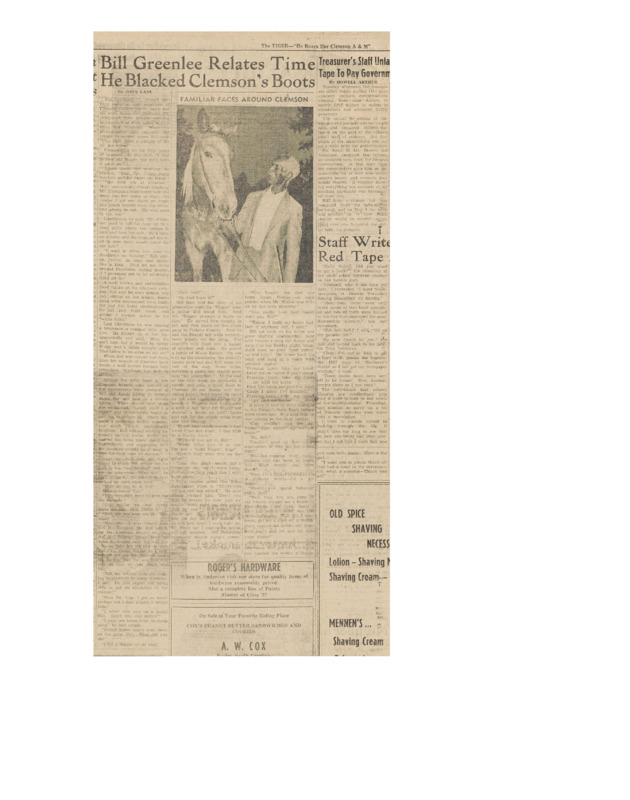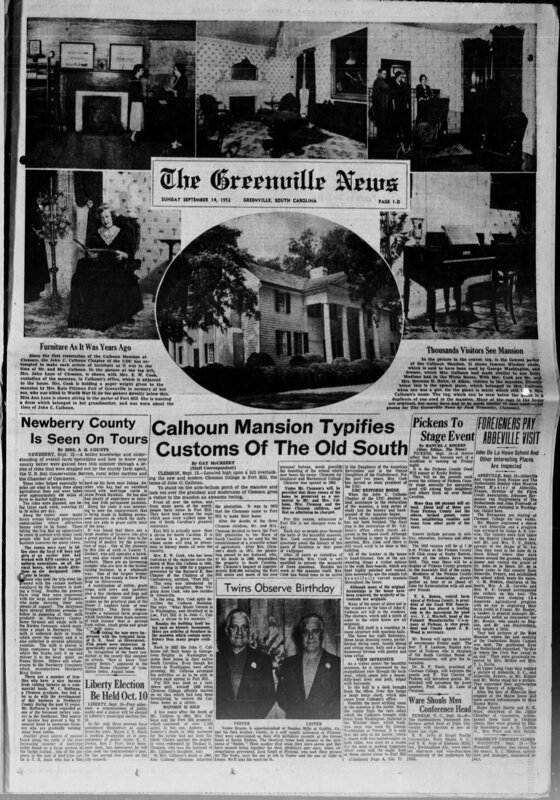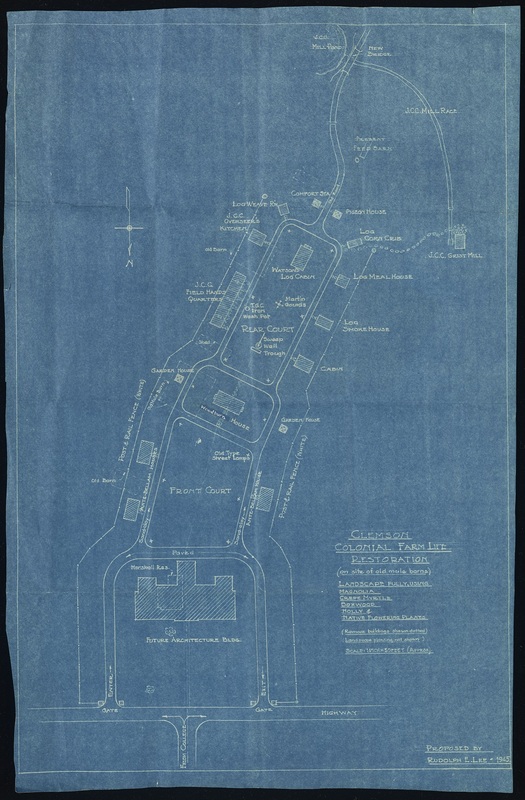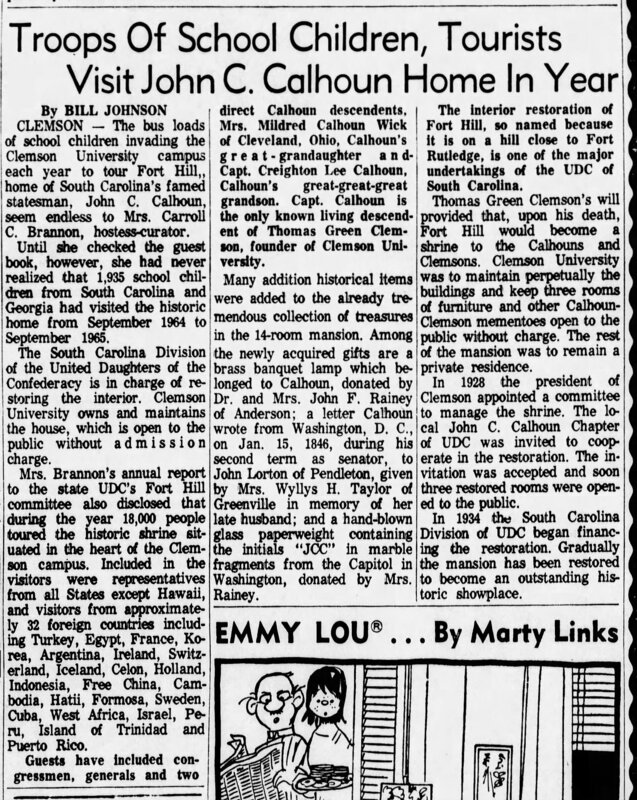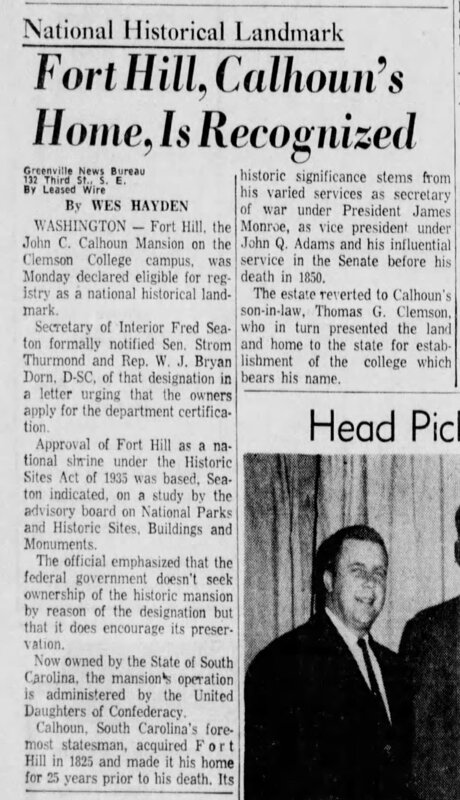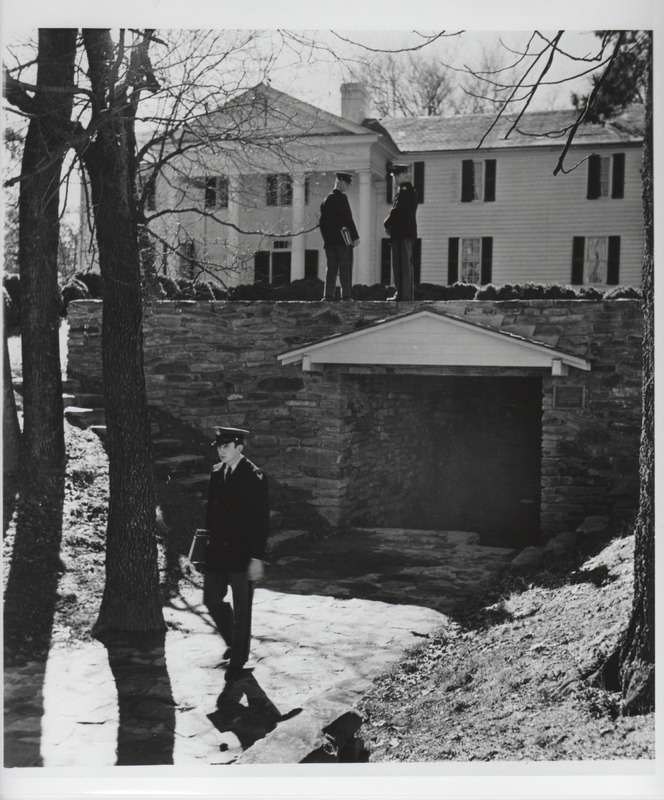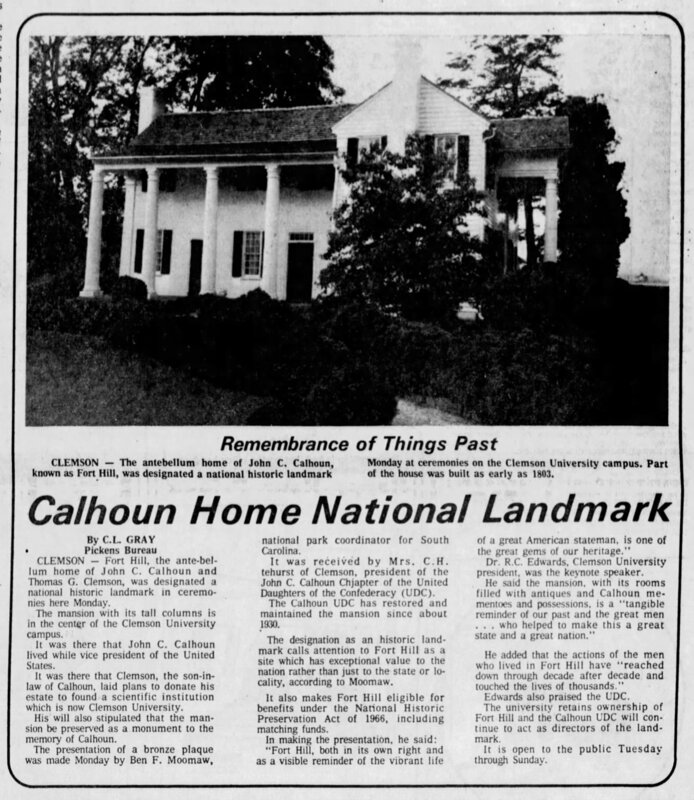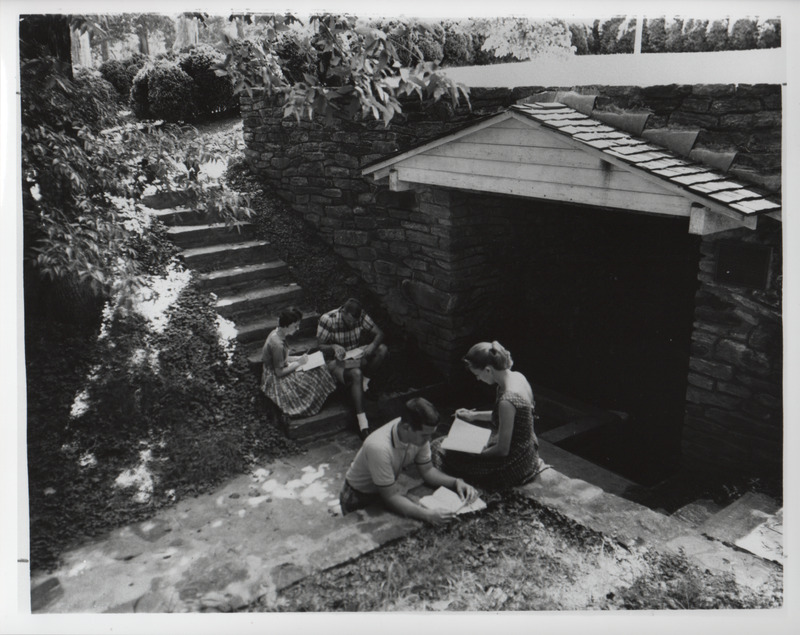UDC - 1942-1984
Calhoun Mansion & United Daughters of the Confederacy: 1940s-1980s
Transitions to a greater involvement of the United Daughters of the Confederacy swelled in the early 1940s. In 1942, Ida Calhoun died and was mourned in the Tiger article “Calhoun Mansion Hostess Dies after Illness.” In 1942, Fort Hill entered a new era with the hiring of curator Harriet H. Cook. The career of Harriet Hefner Cook is very influential in this later period and she worked at Fort Hill for seventeen years. Cook took over as curator following Ida Calhoun in 1941 and served through 1958. She was influential in the writing of the first souvenir booklet on Fort Hill and in 1965 published as her final project a book length text on John C. Calhoun: The Man.The Board of Trustees Minutes noted that her role was that of “Caretaker of Calhoun Mansion; Salary $840.00; Effective January 5, 1942.”Cook continued in the position through October of 1958 when she reached mandatory retirement age of 65 years old.
A resolution was presented to the Board of Trustee in June 1958 to request an extension. In a letter included in the Minutes, the State Fort Hill Committee of the South Carolina Division of the Daughters of the Confederacy requested a waiver of the stipulation. The resulting BOT action in the case of Cook and another aged out employee was that, “The Board reaffirmed the “Retirement Policy for the Clemson Agricultural College” adopted at the meeting of October 29, 1956, and refused the two requests for retention.” A Clemson Tiger article documented on November 6, 1958, her retirement, Mrs. Harriet Hefner Cook Retires as Hostess - Curator of Calhoun Mansion.
In 1948, The Tiger featured a headline article, “Bill Greenlee Relates Time He Blacked Clemson’s Boots.” The then 71-year-old recounted stories of Thomas Clemson and was pictured in a photograph with a horse he owned. Born around 1877, Greenlee was around eleven or twelve when Thomas Clemson died. This account was only one of a handful of accounts of African Americans who were represented in research during the restoration phase of the 1930-1940 period or earlier. A couple of exceptions were Professor Alester Holmes making a reference to Jim Fruster. Other spotty references are to a Cato reminiscences mentioned by both Grace Ward Calhoun in Long, Long, Ago and in Margaret Coit Elwell’s biography of John C. Calhoun which was published in 1950.
Interestingly, the year before in 1947, a Committee of the Board of Trustees had approved marking the burials on Cemetery Hill but was never completed. As for Greenlee, his notoriety grew within the Clemson community in somewhat and was fondly remembered as “Uncle Bill.” A bust of Bill Greenlee was sculpted by Abraham Wolfe Davidson. While the existence of the artwork is undetermined. Photographic evidence records the design. Greenlee had been a s coach driver of Clemson founder Thomas G. Clemson. He worked for the college for over fifty years and advised Davidson in his modeling of the original Clemson statue, which was cast in stone in 1939.
Fort Hill’s history in the 1960s-1980s is dominated by the curators of the time who were active members of the United Daughters of the Confederacy, which was a requirement for employment. The actual transitions in interpretation was limited. Succeeding Cook was another long-term Curator, Revelie Brannon (Mrs. Carol Brannon) who served as curator from 1962-1984.
In 1962, a new Curator was installed at Fort Hill Revelie Brannon (Mrs. Carroll Brannon). She would serve in that capacity from 1962-1984. Brannon’s twenty-two years extended through a transitional period in the history of the institution. In 1963, the first African American student Harvey Gantt was enrolled. In 1964, the institution’s name was changed from ClemsonAgricultural College to Clemson University. Not to mention that on a national level the Civil Rights Act had been passed in 1964 and the Voting Rights Act of 1965.
